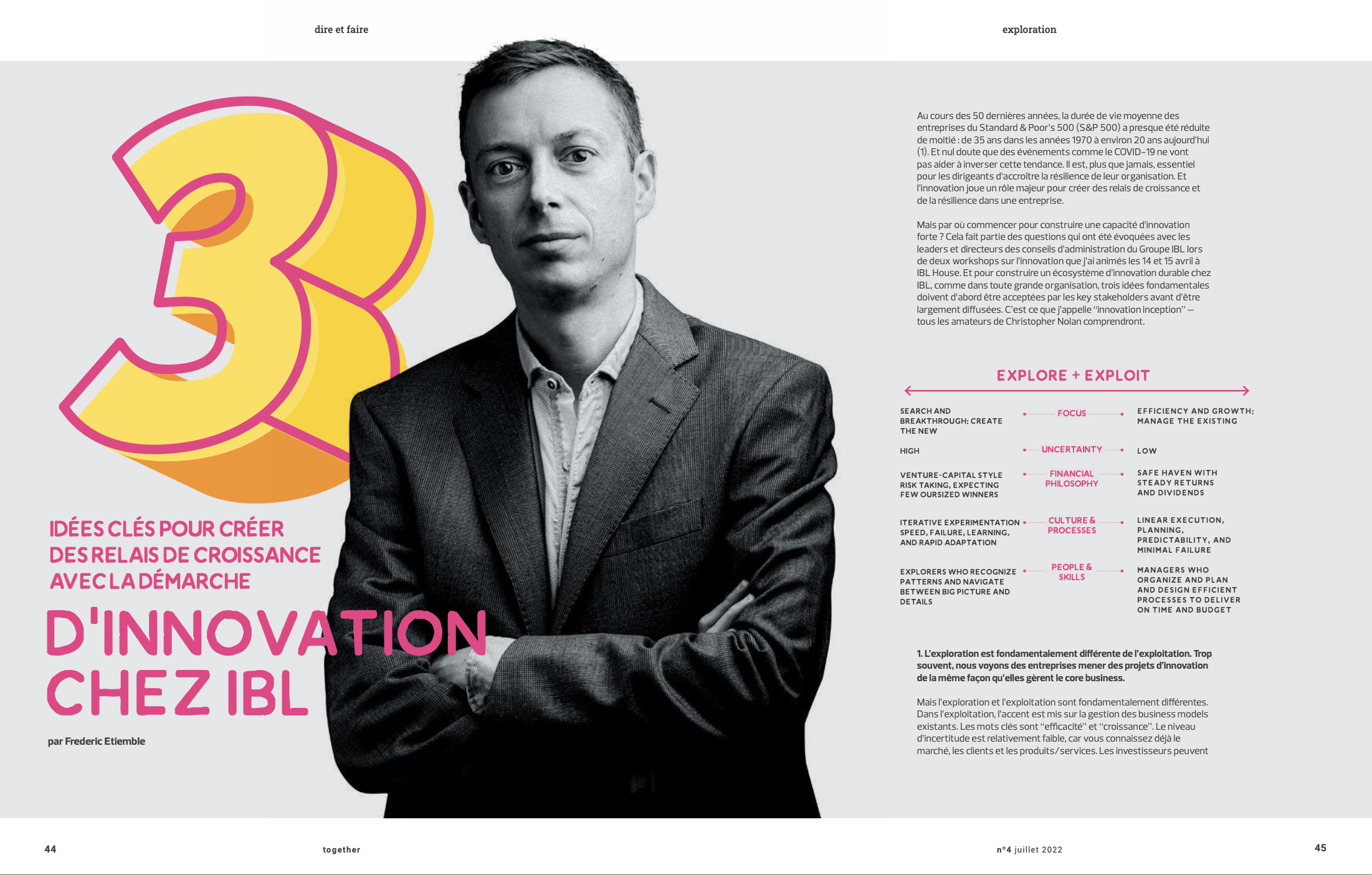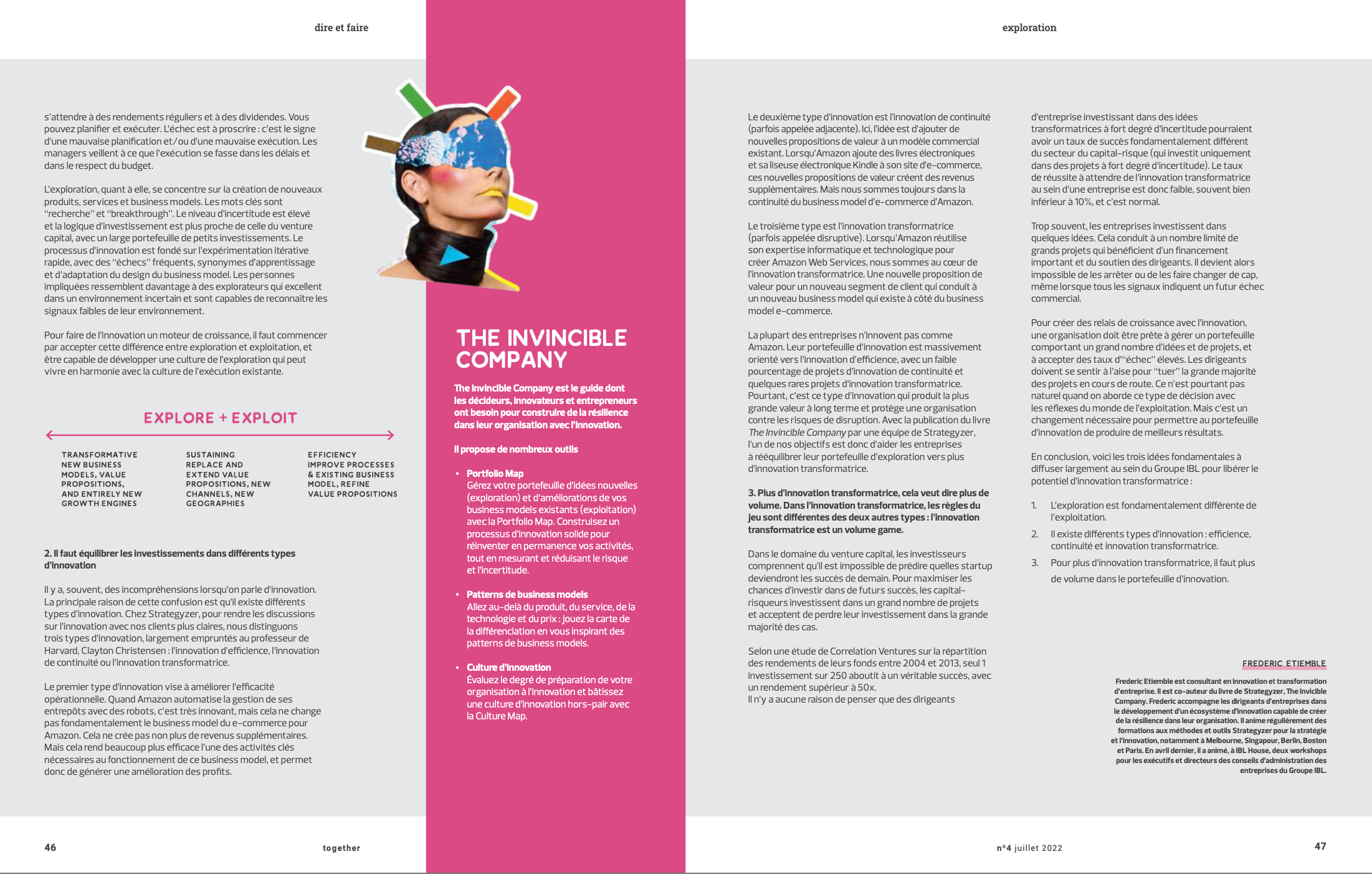My 2022 writing year in review
Photo by Carla Cervantes on Unsplash
From the trenches of strategy and innovation, I brought back the material for a few more blogposts and articles last year that all aim to share learnings that can be useful to others with similar objectives. In 2022 I published:
- 13 posts for the Vibrance Partners blog or my personal blog,
- An article for Together, IBL Group magazine, on “three key ideas to create new growth engines with innovation” (in French).
My 2022 writing year in review
BLOGGING (in chronological order)
Books that most influenced my work in 2021
In this blogpost I reflect on the most useful books on innovation and business transformation I read in 2021. The four books I referred the most to fellow practitioners, clients and friends.
What you should know about innovation’s time to impact
When leaders turn for help on innovation, the last thing they want to hear is that transformative innovation’s time to impact is unpredictable and long. Still it is important to manage leaders’ expectations early on, if only to give transformative innovation the best chance of success.
Let me explain in this post what I believe all leaders should know about innovation’s time to impact and how to overcome the longer time to impact of transformative innovation.
How to get more from your digital transformation?
You might think that digital transformation is old news in 2022. But many organisations are still midway through large digital transformation programs. And when you ask questions, they’re often met with doubts and confusion, especially on what’s exactly in scope and what this digital transformation will bring to the business.
In this blogpost I will show how to use the Business Model Canvas to bring clarity to such complex digital conversations, and open up opportunities to get more growth and resilience from digital transformation.
What the latest IPCC report changes to your strategy process
Findings in the International Panel on Climate Change (IPCC) report published at the end of February 2022 show that climate breakdown is happening faster than expected. The report insists on the potential dire consequences of inaction for human beings and businesses.
In this article I want to highlight how this impacts strategic planning as “climate change” could quickly become the main threat to deal with for any organisation, and its biggest opportunity at the same time.
How to truly help leaders with visioning work?
The ability to go beyond an existing business model, to transcend current industry boundaries, or to connect to a higher purpose that we’ve seen in some organisations all started with a new vision. But this doesn’t happen that often.
In this blogpost I want to summarise key convictions on how to truly help business leaders free themselves from the daily grind and come up with positive visions for their companies.
Innovation requires deep alignment of executives and the board
Creating a sustainable innovation capability in an organisation is big endeavour that requires strong leadership vision, a vision truly understood and endorsed by the board.
In the last few years, I have developed an approach that helps executives and directors better understand disruption risks and strategic opportunities, requirements for exploration of those opportunities, and their respective roles to design and execute corporate innovation.
In this blogpost, I will focus on key questions that usually best contribute to shifting directors’ perspective on risk management and innovation, and ultimately create enthusiasm to have innovation added to the agenda of the board.
Four strategic shift to achieve both growth and sustainability targets
For a long time, growth and sustainability seemed like obvious opposites, with efforts in one negatively impacting the other. But this is now changing rapidly.
In this blogpost I examine 4 strategic questions every leader should explore to achieve both growth and sustainability targets in the years ahead.
How can organisations…
differentiate products and services through sustainability?
decarbonise a Business Model?
explore new green business ideas?
re-balance their business portfolio towards a more sustainable portfolio?
The downturn could be an opportunity in disguise for innovation.
To assess whether leaders would be able to execute an ambitious innovation program during a downturn, there are three areas they should first look into:
The magnitude of the resource crunch impacting corporate innovation,
The leadership bandwidth available for innovation during the downturn,
The innovation readiness of the organisation.
Should you incentivise employees to innovate?
We’ve learnt from surveying employees in large organisations in all types of industries that the biggest blockers to innovation from their perspective is always the same: the lack of a proper incentives and rewards system.
In this blogpost I propose an approach to “incentivise” employees to innovate that goes beyond the narrow scope of financial rewards and also focuses on:
Removing the underlying blockers for employees to innovate,
Helping them connect to their intrinsic motivation,
Accessing financial and non-financial rewards adapted to corporate innovation.
What changes when you start scaling?
A lack of awareness and readiness can seriously hinder the ability of corporate innovators and scale-up leaders to successfully scale their new venture in an incumbent business.
In this blogpost I highlight how leaders of scale-ups should get ready for and adapt to two major changes in the scaling phase:
Shifting their Business Model focus,
Rethinking the Operating Model.
Who should lead the new talent war for your organisation?
At one point or another during the Covid-19 pandemic, many employees realised that their relationship with work had become a bad relationship. And so “the great resignation” started.
In this blogpost I want to highlight how this is triggering an existential crisis for the modern organisation, and how winning the new talent war will require a complete redesign of the organisation’s operating model; a redesign to be led by a new breed of Human Resources leaders.
Is the tide turning on Zara and fast fashion?
A recent heated conversation about Zara reminded me of the inflection point concept that Rita McGrath introduces in her book titled Seeing Around Corners.
In this blogpost I highlight three characteristics of inflection points that every leader should be aware of to help their organisation navigate them.




